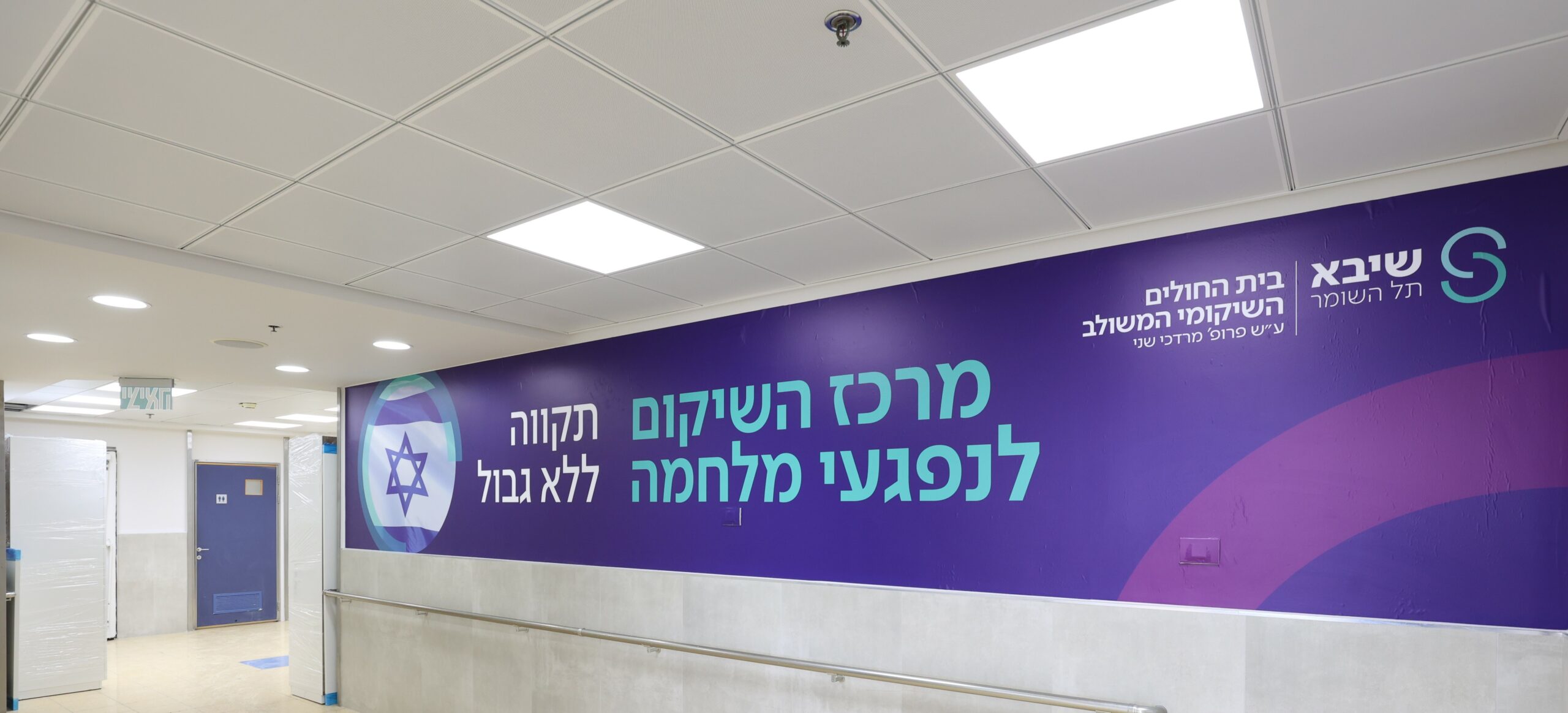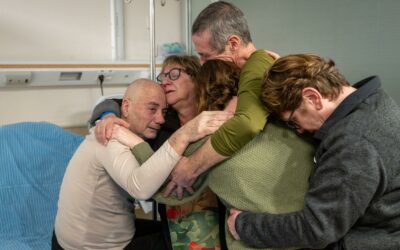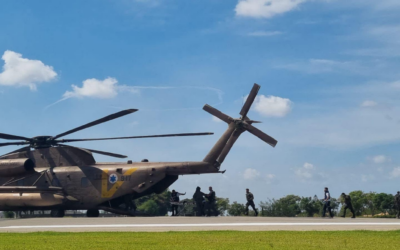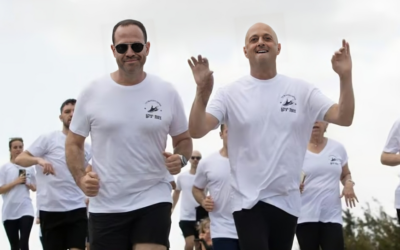Soldiers’ Stories of Strength from Sheba’s Patio
The contrast between Sheba’s current state and its condition before the war is stark. Unlike a typical medical center, when one traverses the corridors of Sheba, the presence of numerous youthful patients undergoing recovery is extremely evident and each day, helicopters fly in new young soldiers who were injured in Gaza. While they can be found across the entire city of health, a major focal point where soldiers convene is the patio.
Fragile Blessings: Mendel’s Tale of Survival
Amongst the many injured soldiers on that patio, one of the more severe cases is 20-year-old Menachem Mendel. Despite enduring significant physical trauma, including damage to his left hand and knee, Mendel’s spirit has remained intact.
While serving in Gaza, it was Menachem’s duty to go into homes and other locations and see if they were booby trapped. He went into great detail of the dangers he encountered hidden within seemingly ordinary surroundings, such as televisions concealing explosive vests, and weapons hidden in hospitals and playgrounds. It was during one of these missions that he and his comrade were hit with a rocket-propelled grenade. While he was airlifted to Sheba for recovery, his partner wasn’t so lucky.
Yet, amidst the chaos, he finds moments of profound appreciation for life’s fragility. He looks at his non-working left hand and considers it a blessing, a reminder of what he still possesses despite the challenges he’s facing.

Surviving October 7th in Kibbutz Kfar Aza
With the atrocities of October 7th now four months behind us, there remain very few patients at Sheba who were injured during the kibbutzim and Nova Music Festival attacks. However, one of the few remaining patients is 34-year-old Ellay Golan. She detailed how she and her husband Ariel awoke to sirens on that infamous morning and immediately went to their one-year-old daughter Yael’s room, which happened to be their home’s shelter.
While inside, Gazan civilians who broke into Israel with Hamas stormed her home in kibbutz Kfar Aza and began setting fire to various parts of their home in effort to smoke them out of the safe room. To avoid suffocation, they fled to their bedroom and barricaded the door. However, things took a far worse turn when the Gazans lit a propane tank and shoved it through the bedroom window.
As the terrorists cleared the area, Ellay Golan and her family hid in the closed cab of a nearby tractor for hours until they were finally rescued and flown to Sheba. Upon arrival, she had to be placed in a medical coma for two months. The smoke inhalation caused significant damage to her lungs and her body was severely burned to the point where most doctors didn’t think she would survive. Miraculously, she pulled through. When asked how she kept pushing herself despite having sustained so much damage, Ellay credited everything to the will to save her daughter Yael.
A Medic’s Struggle: Witnessing War’s Harrowing Toll
On the other side of the spectrum, Dr. Scott Ehrenberg, an Israeli army medic, found himself thrust into the heart of the conflict in Gaza, where the youthfulness of the wounded soldiers struck a chord within him. Raised in Great Neck, New York, Ehrenberg’s decision to relocate to Israel at 18 was deeply influenced by his grandparents’ survival of the Holocaust, instilling in him a profound sense of the Jewish people’s need for a secure homeland.
Assigned to treat the wounded just outside Gaza, Ehrenberg faced relentless days of trauma as the war waged on. Being an internist accustomed to caring for the elderly, the intensity and scale of the injuries presented a stark departure from his prior experience.
With each casualty, Ehrenberg and his medical team worked tirelessly to stabilize the wounded, administering lifesaving interventions amidst the chaos. Despite the overwhelming demands, Ehrenberg found himself grappling with the unyielding tide of casualties, yearning for respite that never came.
Amidst the relentless pace of treating the wounded, Ehrenberg confronted the grim reality of declaring soldiers dead. Witnessing the dignified procession of bodies being loaded into white bags for transport, he bore witness to the full toll of the conflict, knowing that behind each casualty lay a family that would soon receive an agonizing call.
Soldiers’ Unity: A Beacon of Hope
Hand in hand with the horrors of war, is also a profound sense of unity that brings all of the diverse communities in Israel together under a common love. An example of this is Sgt. Major Razi, a 26-year-old Israeli Druze soldier who aspires for a lifelong military career. Despite surviving an RPG explosion on November 13th, he continues his recovery at Sheba Medical Center, still reliant on a crutch.
Explaining his commitment to the army, Razi, an Arab and Druze, affirmed his allegiance to Israel, expressing a desire to defend his homeland. Refuting allegations of Israeli oppression, he attributed the conflict to Palestinians and their desire to wreak havoc and expressed hope for peace. A poignant moment unfolded as Razi and Orthodox Jewish soldier David, both bearing similar war wounds, immediately embraced each other, having struck up a unique friendship on their patio, a friend that symbolizes Israel’s unity amidst adversity.




